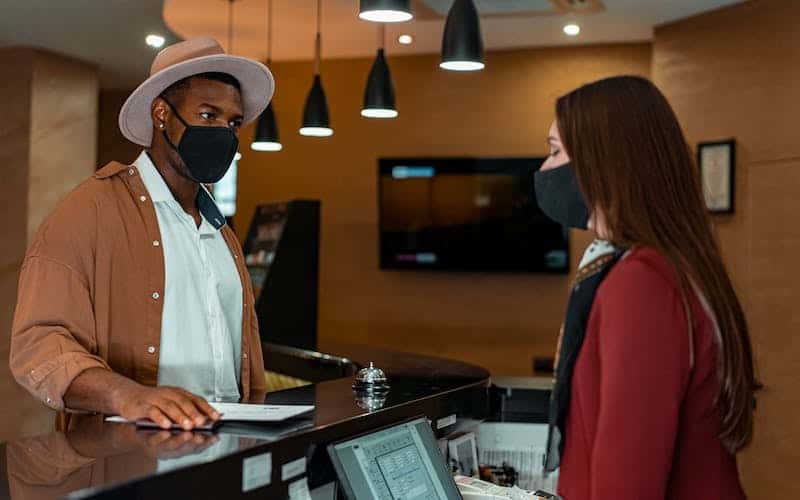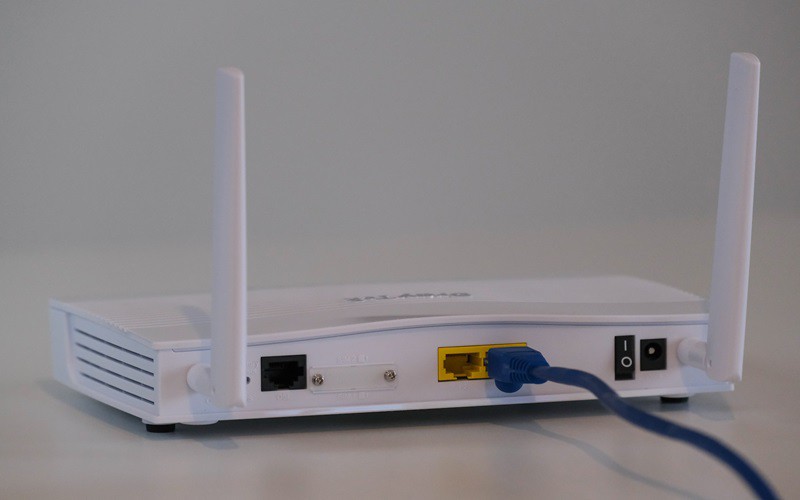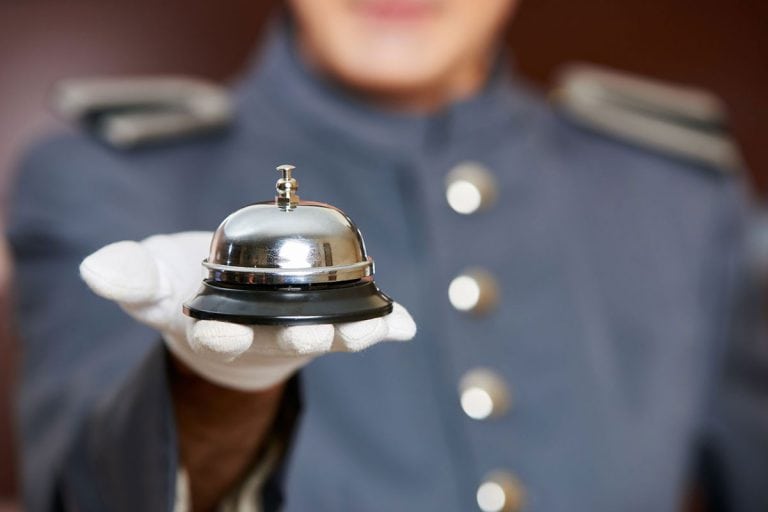In today’s connected world, staying connected to the internet is essential, even when you’re on the go. However, hotel Wi-Fi can sometimes be unreliable or slow, making it difficult to get work done or enjoy streaming your favorite shows.
But fear not! There is a solution that can help you overcome these connectivity issues – setting up a router in your hotel room.
If you’re short on time, here’s a quick answer to your question: Yes, you can set up a router in a hotel room. In this article, we will guide you through the process, step by step, ensuring a smooth and hassle-free setup.
In this comprehensive guide, we’ll provide you what you need to set up a router in a hotel room and how to do it.
Things you need
What you will need:
Before we dive into the details, let’s go over what you will need to set up a router in your hotel room:
1. A portable router: Look for a compact, travel-friendly router that supports wireless connectivity and has Ethernet ports for wired connections.
2. An Ethernet cable: This will be used to connect the router to the hotel’s wired internet connection, if available.
3. A power adapter: Make sure you have the appropriate power adapter for your router, as different countries may have different plug types.
4. A laptop or smartphone: You will need a device to configure and manage the router’s settings.
Now that you have everything you need, let’s move on to the step-by-step guide on setting up a router in your hotel room.
Step 1: Check Hotel Policies and Network Setup
Check hotel policies regarding routers
Before setting up a router in your hotel room, it is crucial to familiarize yourself with the hotel’s policies regarding personal network equipment.
Some hotels may have restrictions or guidelines in place that prohibit the use of routers or require prior approval. It’s always a good idea to contact the hotel’s front desk or check their website for information on their policies.
Additionally, certain hotels may offer their own Wi-Fi services, and using a personal router could potentially interfere with their network.
By understanding the hotel’s policies, you can ensure that you are not in violation of any rules and can proceed with setting up your router without any issues.

Determine the network setup
Once you have confirmed that setting up a router is allowed, the next step is to determine the network setup in your hotel room. Most hotels provide Wi-Fi access to their guests, but the setup can vary from one location to another.
First, check if the hotel offers free Wi-Fi or if there is a charge for access. Some hotels provide complimentary Wi-Fi in all areas, while others may only offer it in certain parts of the building. Knowing the details of the network setup will help you make informed decisions about your own router setup.
Furthermore, you should find out if the hotel provides a wired internet connection in the room. This information can be useful if you prefer a wired connection or if you encounter any issues with the Wi-Fi signal. Having this knowledge will allow you to plan accordingly and ensure a smooth setup process for your router.
Step 2: Connect the Router to the Modem
Locate the modem
Before you can connect the router to the modem, you need to locate the modem in your hotel room. In most cases, the modem will be located near the television or in a designated area for internet access. If you are unable to locate the modem, you can contact the hotel staff for assistance.
Connect the router to the modem
Once you have located the modem, you can proceed to connect the router. Start by unplugging the Ethernet cable from the modem and connecting it to the WAN or Internet port on the router. This port is usually labeled and can be found on the back of the router. Make sure the cable is securely connected.
Next, connect one end of another Ethernet cable to one of the LAN ports on the router and the other end to your device, such as a laptop or smartphone. This will enable you to access the internet through the router.
Finally, plug in the power adapter for the router and wait for it to power on. Once the router is powered on, you should see the LED lights on the front of the router indicating a successful connection.
It’s important to note that the specific steps may vary depending on the make and model of your router. Always refer to the user manual provided by the manufacturer for detailed instructions.

Step 3: Configure Router Settings
Once you have successfully accessed the router’s admin panel, it’s time to configure the router settings to ensure a smooth and secure internet connection during your stay in the hotel. Here are the essential steps you need to follow:
Access the router’s admin panel
To access the router’s admin panel, open your web browser and enter the default IP address provided by the router manufacturer. This is usually mentioned in the router’s manual or can be found on the back of the router itself. Once you enter the IP address in the browser’s address bar and hit enter, you will be prompted to enter the admin username and password.
Pro tip: If you can’t find the default IP address, a quick Google search using the router’s model number can often provide you with the necessary information.
Configure wireless settings
Once you are logged into the admin panel, navigate to the wireless settings section. Here, you can customize the network name (SSID) to make it easily identifiable.
You can also choose the appropriate wireless channel to avoid interference from other nearby networks. Additionally, you can adjust the transmission power to optimize the signal strength within your hotel room.
Set up a secure password
One of the most crucial steps in configuring your router is setting up a strong and secure password. This will prevent unauthorized access to your network and ensure that only authorized guests can connect.
Make sure your password is a combination of uppercase and lowercase letters, numbers, and special characters. Avoid using easily guessable passwords such as “password” or “123456789.”
Enable network encryption
Enabling network encryption is essential to protect your data from being intercepted by malicious individuals. Choose a strong encryption protocol such as WPA2-PSK (Wi-Fi Protected Access 2 with Pre-Shared Key). This encryption method provides a high level of security for your wireless network.
Did you know? According to a study conducted by the Wi-Fi Alliance, 75% of travelers consider the availability of secure Wi-Fi as a critical factor when choosing a hotel.
By following these steps to configure your router settings, you can ensure a secure and reliable internet connection during your stay in the hotel. Now, you can browse, stream, and stay connected without any worries!
Step 4: Test and Troubleshoot
Connect your devices to the router
Once you have set up your router, it’s time to connect your devices to it. Most routers have a default Wi-Fi network name (SSID) and password, which you can find on the router’s label or in the user manual.
On your device, go to the Wi-Fi settings and select the network that matches the SSID. Enter the password when prompted, and you should be connected to the router.
It’s important to note that some hotels may have additional security measures in place, such as a captive portal. In this case, you may need to open a web browser and follow the on-screen instructions to authenticate and gain access to the internet.

Test the internet connection
After connecting your devices to the router, it’s crucial to test the internet connection to ensure everything is working properly.
Open a web browser on your device and try accessing different websites to see if they load correctly. You can also try streaming videos or downloading files to test the speed and stability of the connection.
If you’re experiencing any issues, make sure that all the cables are securely connected and restart the router and your device.
Additionally, check if the hotel’s internet service is working fine by asking the front desk or contacting their technical support if available.
Troubleshoot any issues
If you encounter any problems with your router setup or the internet connection, here are some troubleshooting steps you can take:
- Restart your router and devices: Sometimes, a simple restart can resolve connectivity issues.
- Check the router settings: Ensure that the router is properly configured and that the Wi-Fi network is functioning as intended.
- Reset the router to factory settings: If all else fails, you can try resetting the router to its default settings and reconfiguring it from scratch.
- Seek assistance from hotel staff: Don’t hesitate to reach out to the hotel staff for help. They may be able to provide additional troubleshooting steps or offer an alternative solution.
Remember, setting up a router in a hotel room can sometimes be challenging due to varying network setups and security protocols. Patience and persistence are key as you troubleshoot any issues that may arise.
Keep in mind that every hotel may have different policies and restrictions regarding the use of personal routers, so it’s always a good idea to check with the hotel staff before setting up your own network.
Step 5: Disconnect and Reset
Disconnect and reset the router
Before you check out of your hotel room, it’s important to disconnect and reset the router to ensure the security of your personal information. Follow these simple steps:
- Locate the router in your hotel room. It’s usually found near the desk or in a corner.
- Unplug the power cable from the router. This will disconnect it from the power source.
- Wait for about 10 seconds and then plug the power cable back into the router. This will reset the router to its default settings.
- Once the router has restarted, you can safely pack up your equipment.
Resetting the router ensures that any customized settings or personal data that may have been stored during your stay are wiped clean. This is especially important if you have connected any personal devices or accessed sensitive information while using the hotel’s Wi-Fi network.
Pro tip: If you’re unsure about how to reset the router, you can always ask the hotel staff for assistance. They will be happy to guide you through the process and ensure that everything is properly disconnected.
Pack up your equipment
Now that you’ve disconnected and reset the router, it’s time to pack up your equipment. Here’s what you need to do:
- Wrap the router and its cables neatly to avoid any tangles or damage.
- Place the router and cables back into their original packaging, if available. This will help protect them during transport.
- Double-check that you haven’t left any cables or accessories behind.
- Finally, pack everything securely in your luggage, making sure to keep it organized and protected.
By properly packing your equipment, you’ll ensure that it stays safe and undamaged during your journey. This will also make it easier for you to set up the router in your next destination.
Remember: It’s always a good idea to double-check that you have all your belongings before leaving the hotel room. This includes any devices or accessories that you may have used during your stay.
Conclusion
Setting up a router in your hotel room can greatly enhance your internet experience, providing you with a reliable and fast connection.
By following the steps outlined in this guide, you can enjoy seamless internet access for work or leisure during your stay.
Just remember to always check the hotel’s policies and guidelines before setting up any additional networking equipment. Happy travels and happy browsing!






